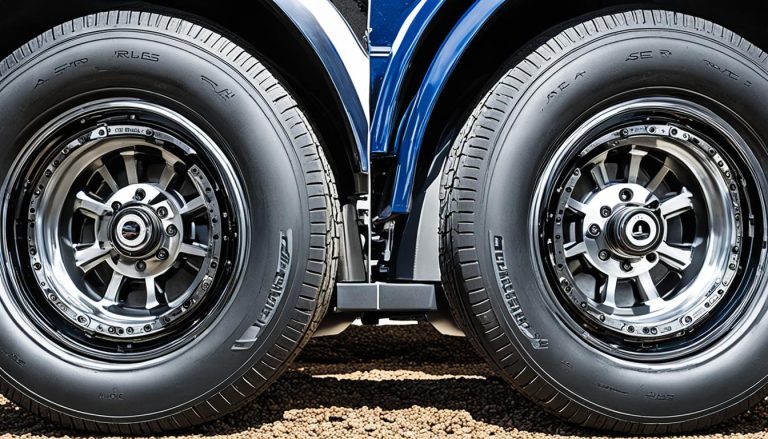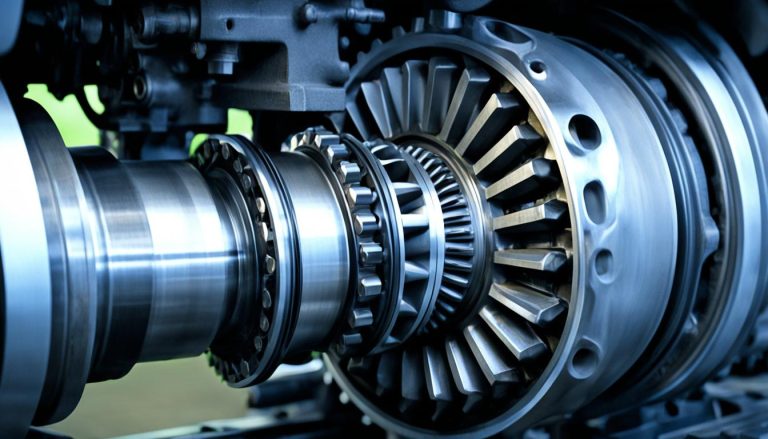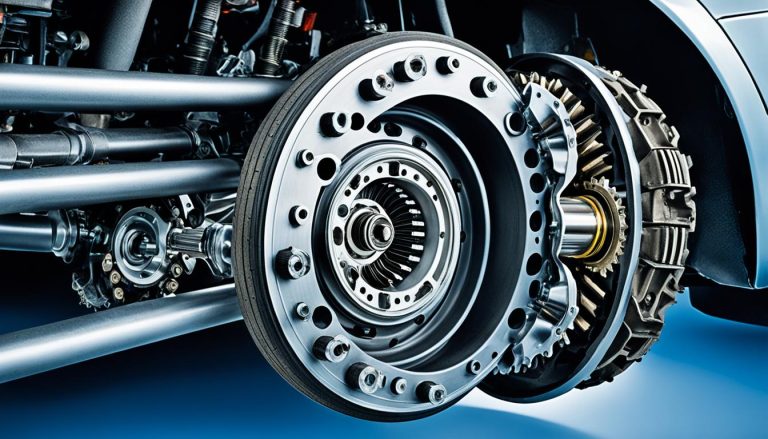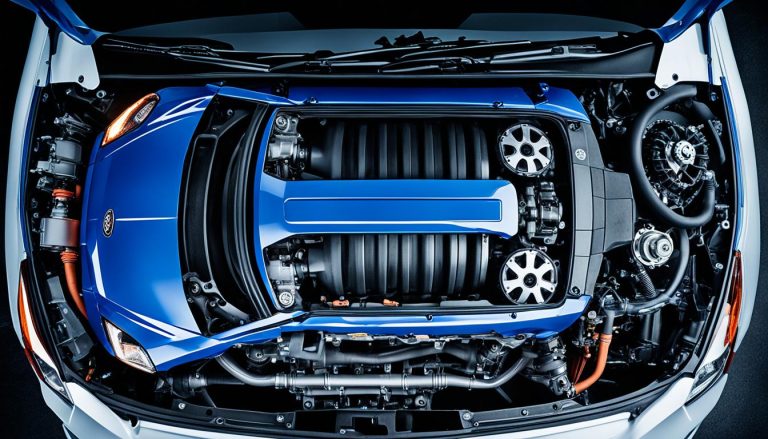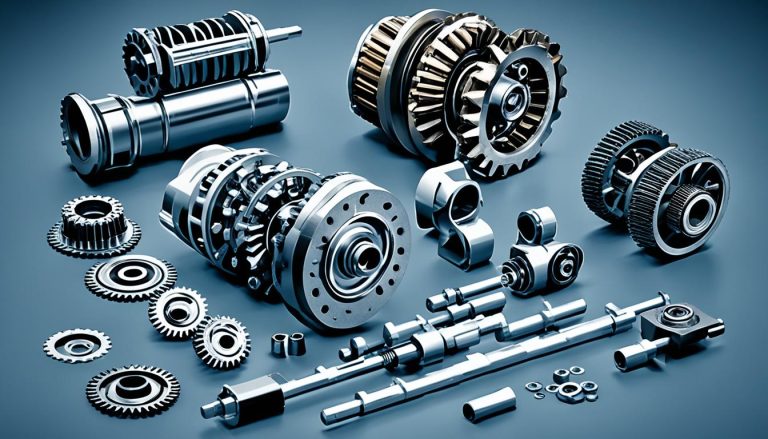Is Your Rear Differential Limited Slip? Find Out How
Curious about your vehicle’s capabilities, especially when it comes to its rear differential? You’re in the right place. Understanding whether you’ve got a limited slip differential (LSD) is more than just car trivia; it’s knowledge that affects how you maintain and drive your machine. Sure, you could take it to a mechanic, but why not empower yourself with the ability to identify those limited slip differential signs?
If you’re up for a bit of automotive DIY, the tell-tale signs are right under your car. Limited slip differential identification can seem daunting, but it’s simpler than you might think. Whether your vehicle is equipped to maintain traction on slippery roads or if it’s sporting a standard differential makes a sizable difference in performance. If the manufacturer’s sticker has faded or disappeared over time, fret not; you can still learn how to check for limited slip differential with a few straightforward steps.
Key Takeaways
- Learn the visual cues that indicate you might have a LSD.
- Understand why LSD is a game-changer in vehicle handling.
- Discover the manual inspection method to identify your differential type.
- Pick up on the importance of axle codes for LSD confirmation.
- Find out how gear oil additives can be a clue to differential type.
Understanding the Basic Functions of a Rear Differential
When you’re navigating a curve or turning a corner, your vehicle’s performance relies heavily on a component known as the rear differential. It’s what allows your wheels to rotate at varying speeds, which is critical for smooth and stable maneuvers. Understanding how a rear differential works, and determining if your rear differential is limited slip, can significantly contribute to the overall maintenance and functionality of your car.
Differences Between Open and Limited Slip Differentials
There are two main types of differentials found in vehicles: open and limited slip. An open differential facilitates each wheel to spin independently, which is adequate for regular driving conditions. However, signs of a limited slip differential include the ability to sense when one wheel is losing traction. This system responds by proportionately limiting slippage, ensuring consistent power delivery to both wheels, particularly beneficial when traction varies across them. Identifying a limited slip differential in your own vehicle can be a valuable skill, particularly when optimizing your car for different driving conditions or when you’re considering modifications.
Importance of Proper Differential Maintenance
The health of your differential—be it open or limited slip—is paramount for peak vehicular performance. Unfortunately, differentials are often overlooked during routine check-ups, yet a well-maintained differential can prevent the need for costly rebuilds or replacements down the line. Recognizing the signs of a limited slip differential and ensuring it receives the appropriate care, such as using the correct oil and regular inspections, can lengthen the lifespan of this essential component.
Whether you’re a seasoned car enthusiast or simply a vehicle owner aiming to broaden your automotive knowledge, recognizing the signs and understanding the significance of your car’s differential type is immensely useful. Keep your ears and eyes open for telltale indicators, maintain it well, and your rides will be all the smoother for it.
How to Tell if Rear Differential is Limited Slip
Being able to identify whether you have a limited slip differential (LSD) as opposed to an open differential is crucial for proper vehicle maintenance and optimal performance. Let’s delve into the most effective methods to check for limited slip differential and key tips for differentiating between limited slip and open differential.
Wheel Spin Test: One way to test for LSD is to check the wheel spin behavior. This test involves placing one wheel on a low-friction surface and the other on a solid one, and then attempting to drive. If both wheels seem to be engaging and pulling your vehicle forward, it’s likely that your car is equipped with an LSD.

VIN and Axle Codes: Another method is examining the vehicle identification number (VIN) and axle codes, typically found on a sticker located on your vehicle’s door jamb. The presence of a particular letter and number combination can indicate an LSD, whereas a pair of numbers usually signals an open differential.
| Axle Code | Differential Type |
|---|---|
| Letter + Number | Limited Slip Differential |
| Two Numbers | Open Differential |
Finally, consider the type of gear oil used. Some gear oils come with additives meant for LSDs, making them suitable for both types of differentials. This can be particularly helpful for vehicles with ambiguous differential labeling.
- Check for gear oils with LSD additives.
- Review maintenance records for past differential service.
- Understand the specific needs for your vehicle model—like a 2000 F250 4X4—regarding differential fluid.
By using these strategies, you will not only ensure the correct maintenance for your differential type but improve your vehicle’s longevity and performance on the road.
Physical Identification: Decoding Differential Housing and Tags
When you’re trying to determine ifs your rear differential is a limited slip variation, certain physical characteristics of the differential housing and any identifying markers are key indicators. Understanding these can save you time and ensure you’re making informed decisions about your vehicle’s maintenance and performance upgrades.
Deciphering Axle Codes on Your Vehicle’s Door Sticker
One reliable method among the ways to identify limited slip differential is by decoding the axle codes located on your vehicle’s door sticker. This sticker, often found on the driver’s side door jamb, contains a wealth of information about your vehicle, including the type of differential it has. An axle code that starts with a letter generally signals the presence of a limited slip differential. Cross-referencing this code with your vehicle manual can confirm the LSD identification.
What a Missing LSD Sticker Can Tell You
If your vehicle is a Toyota or comes from another brand that typically labels its limited slip differentials with a sticker, but this sticker is missing, it may be a clue—it can imply that the vehicle has an LSD and the sticker has worn away or was removed. Although not a definitive method, it’s an observation that prompts further investigation into the type of differential installed.

To aid in the identification process, here is a detailed table explaining the potential indicators of a limited slip differential based on differential housing and tag attributes:
| Indicator | Limited Slip Differential (LSD) | Open Differential |
|---|---|---|
| Axle Code Prefix | Begins with a letter (e.g., “A” or “B”) | Typically numeric |
| Differential Cover Bolts | Variable; not a standalone indicator | Commonly 10 bolts |
| LSD Sticker Presence | Originally present but may be missing | Not applicable or sticker absent |
| Tag or Engraving | May have “LSD” or “Posi” tags/engravings | Lacking LSD-specific markers |
Keep in mind, the identification can vary between manufacturers and models, so it’s important to use multiple methods of limited slip differential identification for an accurate assessment. When in doubt, consult your vehicle manual or a professional mechanic for advice.
Manual Check Methods to Determine Differential Type
If you’re questioning how to tell if your rear differential is limited slip, rest assured you can uncover the answer with a bit of DIY inspection. This hands-on approach not only satisfies your curiosity but can also guide you in selecting the correct fluids and parts specific to your vehicle’s needs. First and foremost, safety is paramount; ensure your vehicle is securely lifted and stabilized before you attempt any form of manual checking.
Initiate the test by carefully spinning one of the rear wheels while the vehicle is raised. Observe the motion of the opposite wheel – a telltale sign of a limited slip differential is when it rotates in the same direction as the wheel you’re spinning. This synchronous movement is because a limited slip differential is engineered to evenly distribute power to both wheels, even when traction is compromised. In contrast, if you find the opposite wheel spinning in the reverse direction or not moving at all, this indicates that your vehicle is equipped with an open differential, where power is directed to the wheel with the least amount of resistance.
To confidently discern how to check for limited slip differential, this manual test is crucial, as it visually demonstrates the physical principles that differentiate the two types of systems. Armed with this knowledge, you can make informed decisions about your vehicle’s maintenance and understand the dynamics of its performance. Remember, a well-maintained differential ensures smoother rides and enhanced vehicle handling in varying driving conditions.
FAQ
How can I tell if my rear differential is a limited slip?
Look for limited slip differential signs such as both wheels spinning in the same direction when one wheel is rotated manually off the ground. Check if your vehicle has “with LSD” or “without LSD” marked, and verify this with the behavior of your wheels during a manual check. Additionally, consult your VIN or axle codes for confirmation.
What are the key differences between open and limited slip differentials?
An open differential allows each wheel to rotate independently, which is standard for smooth and consistent road handling. A limited slip differential, on the other hand, has a mechanism that limits the speed difference between the wheels, providing better traction by directing power to the wheel with the most grip, especially in low traction conditions.
Why is it important to maintain my vehicle’s differential properly?
Proper maintenance of your differential is crucial for vehicle performance and longevity. Neglected differentials can suffer from premature wear, leading to expensive rebuilds or replacements. Regular maintenance schedules and using the correct type of oil, tailored to your differential type, can prevent these issues.
What are some methods to check for a limited slip differential?
Various methods to identify a limited slip differential include performing a manual wheel spin test, consulting your vehicle’s documentation for axle codes or VIN information, and inspecting the physical characteristics of the differential housing. Observing wheel behavior in different traction scenarios can also help differentiate between limited slip and open differentials.
How can I decipher the axle codes on my vehicle’s door sticker?
Axle codes are generally a combination of letters and numbers located on a sticker inside the driver’s door jamb. A letter followed by a number typically signifies a limited slip differential, while a sequence of just numbers usually indicates an open differential. Refer to your vehicle’s manual or a dealer for model-specific information.
What does a missing LSD sticker indicate?
A missing LSD sticker might simply mean that it has worn off or been removed over time. However, if you suspect your vehicle is equipped with an LSD based on other indicators, such as vehicle model or driving behavior, consider performing additional checks, such as the wheel spin test or consulting a professional to confirm.
How can I manually check if my vehicle’s differential is limited slip?
To manually check for a limited slip differential, you can raise the rear end of the vehicle, spin one wheel, and observe the direction of the opposite wheel. If it spins in the same direction, that’s a sign you may have an LSD. If it spins in the opposite direction or not at all, it’s likely an open differential. Remember to perform this check safely with proper support for the vehicle.

